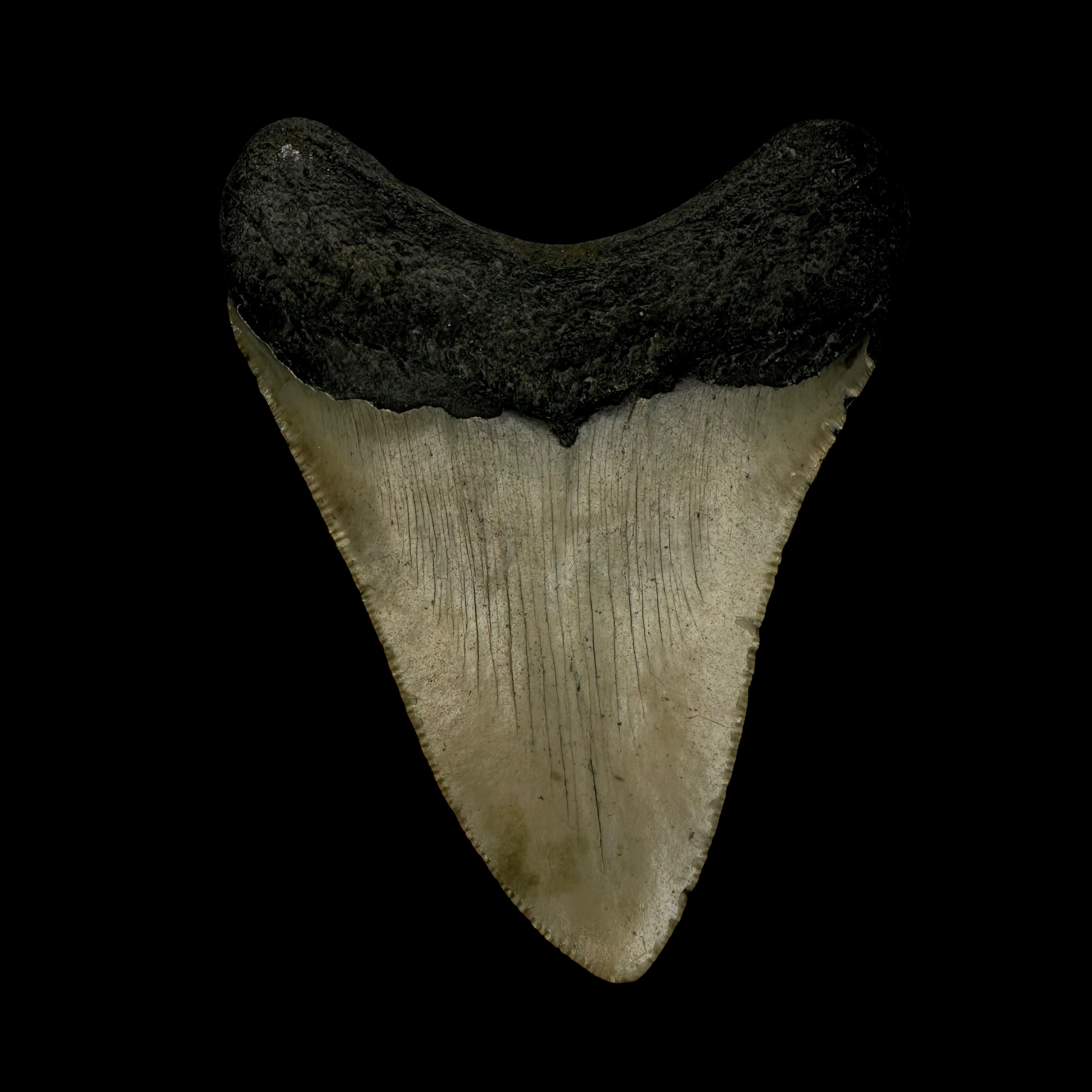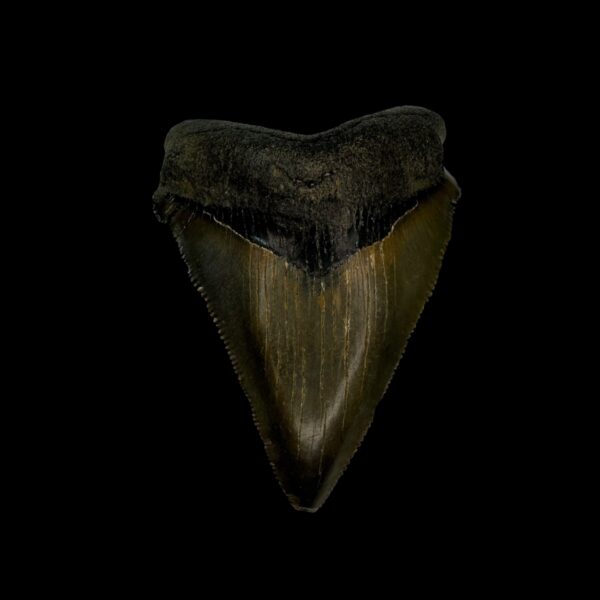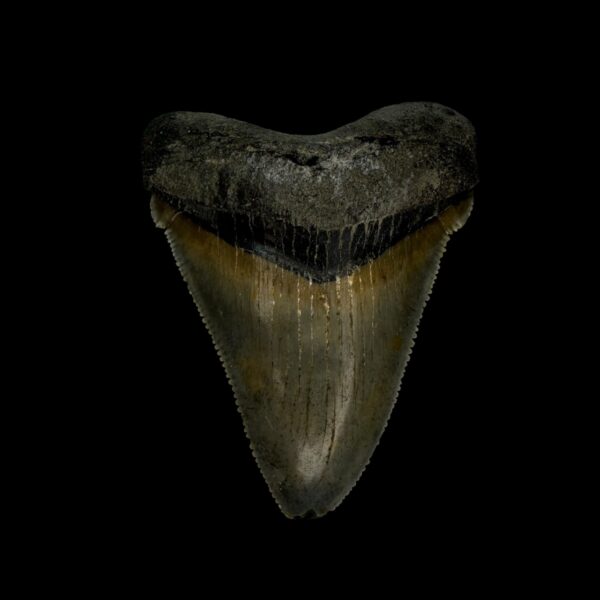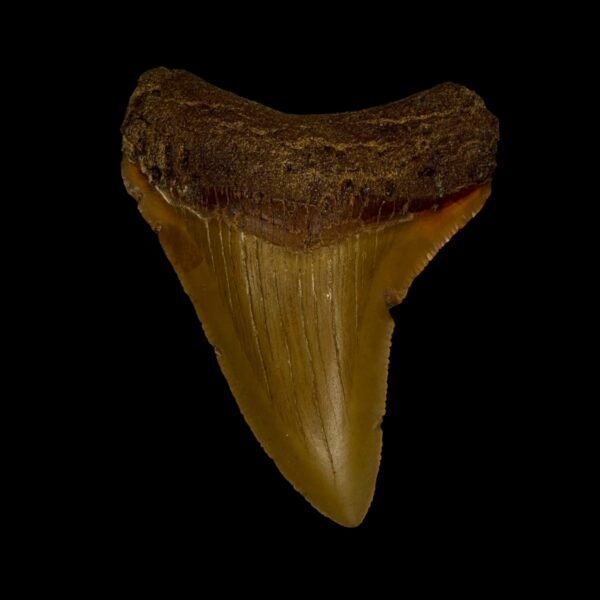Megalodon Tooth Size: How Big Were These Prehistoric Shark Teeth?
Megalodon Tooth Size vs. Great White Shark: A Jaw-Dropping Comparison
The Megalodon tooth size is one of the most fascinating fossils ever discovered, offering a glimpse into the immense size and power of this prehistoric predator. The Megalodon (Otodus megalodon) dominated the oceans millions of years ago, far surpassing the great white shark in size and strength. One of its most distinctive and awe-inspiring features was its massive teeth.
While a great white shark’s teeth rarely exceed 3 inches (7.6 cm), Megalodon tooth size was truly monstrous. But how big could they really get?
The Enormous Megalodon Tooth Size and Its Function
The size of a Megalodon tooth is one of the key indicators of the shark’s overall dimensions. These massive teeth could reach an astonishing length of 7 inches (17.8 cm), making them the largest shark teeth ever found.
🦷 What made Megalodon tooth size so large? Megalodons were apex predators that feasted on whales, dolphins, and other large marine creatures. Their gigantic, serrated teeth were built to crush bone and tear through thick flesh. With such specialized teeth, the Megalodon could deliver an estimated bite force of up to 40,000 pounds per square inch!
Where Are Megalodon Teeth Found Today?
🔗 Buy Authentic Megalodon Teeth Here: The Fossil Exchange
Fossilized Megalodon teeth are some of the most commonly found prehistoric shark fossils. Since sharks continuously shed and replace teeth throughout their lives, countless Megalodon teeth have been discovered in different locations around the world. The most notable fossil hotspots include:
📍 Florida, USA 📍 South Carolina, USA 📍 North Carolina, USA 📍 Morocco 📍 Peru 📍 Australia
🔗 External Resource: Smithsonian Megalodon Facts
How Do Fossilized Megalodon Teeth Form?
When a Megalodon lost a tooth, it would sink to the ocean floor and become buried in sediment. Over millions of years, minerals replaced the organic material, preserving the tooth as a fossil. This process explains why we still find Megalodon teeth today, despite the species having gone extinct around 3.6 million years ago.
Tips for Finding a Megalodon Tooth Fossil
Many fossil hunters dream of discovering a Megalodon tooth. If you’re interested in finding one, here are some expert tips:
🔹 Search riverbeds and coastal areas where erosion has exposed ancient sediments. 🔹 Visit fossil-rich locations such as Florida’s Peace River or South Carolina’s Cooper River. 🔹 Check the shoreline after storms—they often wash up fossils onto beaches. 🔹 Use a small shovel or sieve to sift through sediment for hidden treasures. 🔹 Join a fossil hunting group or take guided fossil tours for expert advice.
🔗 External Resource: National Geographic on Megalodon Fossils
How Did the Megalodon Go Extinct?
Despite being the largest shark to ever exist, the Megalodon eventually disappeared. Scientists have proposed several possible causes for its extinction:
🔥 Climate Change and Megalodon Tooth Size Reduction: Cooling ocean temperatures reduced the Megalodon’s food supply. 🐋 Competition and Impact on Megalodon Tooth Size: Smaller, more agile predators, such as early great white sharks, may have outcompeted them. 🌍 Ecosystem Shifts Affecting Megalodon Tooth Size: The decline of certain whale species could have led to food shortages.
🔗 External Resource: Fossil Hunting Tips
Internal Links for More Fossil Discoveries
🔹 How to Identify Fossilized Shark Teeth 🔹 The Best Places to Find Prehistoric Fossils
Final Thoughts on Megalodon Tooth Size
The Megalodon’s teeth remain one of the most astonishing remnants of prehistoric life. With some reaching lengths of 7 inches, they serve as a testament to the sheer scale of this ancient predator. Fossil hunters around the world continue to search for these incredible relics, keeping the legacy of the Megalodon alive.
Are you intrigued by Megalodon fossils? Keep exploring the world of prehistoric discoveries—you never know, you might just uncover a Megalodon tooth yourself!
Megalodon Tooth Size: How Big Were These Prehistoric Shark Teeth?
Megalodon Tooth Size vs. Great White Shark: A Jaw-Dropping Comparison
The Megalodon tooth size is one of the most fascinating fossils ever discovered, offering a glimpse into the immense size and power of this prehistoric predator. The Megalodon (Otodus megalodon) dominated the oceans millions of years ago, far surpassing the great white shark in size and strength. One of its most distinctive and awe-inspiring features was its massive teeth.
While a great white shark’s teeth rarely exceed 3 inches (7.6 cm), Megalodon tooth size was truly monstrous. But how big could they really get?
The Enormous Megalodon Tooth Size and Its Function
The size of a Megalodon tooth is one of the key indicators of the shark’s overall dimensions. These massive teeth could reach an astonishing length of 7 inches (17.8 cm), making them the largest shark teeth ever found.
🦷 What made Megalodon tooth size so large? Megalodons were apex predators that feasted on whales, dolphins, and other large marine creatures. Their gigantic, serrated teeth were built to crush bone and tear through thick flesh. With such specialized teeth, the Megalodon could deliver an estimated bite force of up to 40,000 pounds per square inch!
Where Are Megalodon Teeth Found Today?
🔗 Buy Authentic Megalodon Teeth Here: The Fossil Exchange (DoFollow)
Fossilized Megalodon teeth are some of the most commonly found prehistoric shark fossils. Since sharks continuously shed and replace teeth throughout their lives, countless Megalodon teeth have been discovered in different locations around the world. The most notable fossil hotspots include:
📍 Florida, USA 📍 South Carolina, USA 📍 North Carolina, USA 📍 Morocco 📍 Peru 📍 Australia
🔗 Smithsonian Megalodon Facts (DoFollow)
How Do Fossilized Megalodon Teeth Form?
When a Megalodon lost a tooth, it would sink to the ocean floor and become buried in sediment. Over millions of years, minerals replaced the organic material, preserving the tooth as a fossil. This process explains why we still find Megalodon teeth today, despite the species having gone extinct around 3.6 million years ago.
🔗 Learn More About Fossilization: National Park Service (DoFollow)
Tips for Finding a Megalodon Tooth Fossil
Many fossil hunters dream of discovering a Megalodon tooth. If you’re interested in finding one, here are some expert tips:
🔹 Search riverbeds and coastal areas where erosion has exposed ancient sediments. 🔹 Visit fossil-rich locations such as Florida’s Peace River or South Carolina’s Cooper River. 🔹 Check the shoreline after storms—they often wash up fossils onto beaches. 🔹 Use a small shovel or sieve to sift through sediment for hidden treasures. 🔹 Join a fossil hunting group or take guided fossil tours for expert advice.
🔗 National Geographic on Megalodon Fossils (DoFollow)
How Did the Megalodon Go Extinct?
Despite being the largest shark to ever exist, the Megalodon eventually disappeared. Scientists have proposed several possible causes for its extinction:
🔥 Climate Change and Megalodon Tooth Size Reduction: Cooling ocean temperatures reduced the Megalodon’s food supply. 🐋 Competition and Impact on Megalodon Tooth Size: Smaller, more agile predators, such as early great white sharks, may have outcompeted them. 🌍 Ecosystem Shifts Affecting Megalodon Tooth Size: The decline of certain whale species could have led to food shortages.
🔗 Fossil Hunting Tips: FossilEra (DoFollow)
Internal Links for More Fossil Discoveries
🔹 How to Identify Fossilized Shark Teeth 🔹 The Best Places to Find Prehistoric Fossils
Final Thoughts on Megalodon Tooth Size
The Megalodon’s teeth remain one of the most astonishing remnants of prehistoric life. With some reaching lengths of 7 inches, they serve as a testament to the sheer scale of this ancient predator. Fossil hunters around the world continue to search for these incredible relics, keeping the legacy of the Megalodon alive.
Are you intrigued by Megalodon fossils? Keep exploring the world of prehistoric discoveries—you never know, you might just uncover a Megalodon tooth yourself!
3
Megalodon Tooth Size: How Big Were These Prehistoric Shark Teeth?
Megalodon Tooth Size vs. Great White Shark: A Jaw-Dropping Comparison
The Megalodon tooth size is one of the most fascinating fossils ever discovered, offering a glimpse into the immense size and power of this prehistoric predator. The Megalodon (Otodus megalodon) dominated the oceans millions of years ago, far surpassing the great white shark in size and strength. One of its most distinctive and awe-inspiring features was its massive teeth.
While a great white shark’s teeth rarely exceed 3 inches (7.6 cm), Megalodon tooth size was truly monstrous. But how big could they really get?
The Enormous Megalodon Tooth Size and Its Function
The size of a Megalodon tooth is one of the key indicators of the shark’s overall dimensions. These massive teeth could reach an astonishing length of 7 inches (17.8 cm), making them the largest shark teeth ever found.
🦷 What made Megalodon tooth size so large? Megalodons were apex predators that feasted on whales, dolphins, and other large marine creatures. Their gigantic, serrated teeth were built to crush bone and tear through thick flesh. With such specialized teeth, the Megalodon could deliver an estimated bite force of up to 40,000 pounds per square inch!
Image: A comparison of Megalodon tooth size with a great white shark tooth.
Where Are Megalodon Teeth Found Today?
🔗 Buy Authentic Megalodon Teeth Here: The Fossil Exchange (DoFollow)
Fossilized Megalodon teeth are some of the most commonly found prehistoric shark fossils. Since sharks continuously shed and replace teeth throughout their lives, countless Megalodon teeth have been discovered in different locations around the world. The most notable fossil hotspots include:
📍 Florida, USA 📍 South Carolina, USA 📍 North Carolina, USA 📍 Morocco 📍 Peru 📍 Australia
🔗 Smithsonian Megalodon Facts (DoFollow)
How Do Fossilized Megalodon Teeth Form?
When a Megalodon lost a tooth, it would sink to the ocean floor and become buried in sediment. Over millions of years, minerals replaced the organic material, preserving the tooth as a fossil. This process explains why we still find Megalodon teeth today, despite the species having gone extinct around 3.6 million years ago.
🔗 Learn More About Fossilization: National Park Service (DoFollow)
Tips for Finding a Megalodon Tooth Fossil
Many fossil hunters dream of discovering a Megalodon tooth. If you’re interested in finding one, here are some expert tips:
🔹 Search riverbeds and coastal areas where erosion has exposed ancient sediments. 🔹 Visit fossil-rich locations such as Florida’s Peace River or South Carolina’s Cooper River. 🔹 Check the shoreline after storms—they often wash up fossils onto beaches. 🔹 Use a small shovel or sieve to sift through sediment for hidden treasures. 🔹 Join a fossil hunting group or take guided fossil tours for expert advice.
🔗 National Geographic on Megalodon Fossils (DoFollow)
How Did the Megalodon Go Extinct?
Despite being the largest shark to ever exist, the Megalodon eventually disappeared. Scientists have proposed several possible causes for its extinction:
🔥 Climate Change and Megalodon Tooth Size Reduction: Cooling ocean temperatures reduced the Megalodon’s food supply. 🐋 Competition and Impact on Megalodon Tooth Size: Smaller, more agile predators, such as early great white sharks, may have outcompeted them. 🌍 Ecosystem Shifts Affecting Megalodon Tooth Size: The decline of certain whale species could have led to food shortages.
🔗 Fossil Hunting Tips: FossilEra (DoFollow)
Internal Links for More Fossil Discoveries
🔹 How to Identify Fossilized Shark Teeth 🔹 The Best Places to Find Prehistoric Fossils
Final Thoughts on Megalodon Tooth Size
The Megalodon’s teeth remain one of the most astonishing remnants of prehistoric life. With some reaching lengths of 7 inches, they serve as a testament to the sheer scale of this ancient predator. Fossil hunters around the world continue to search for these incredible relics, keeping the legacy of the Megalodon alive.
Are you intrigued by Megalodon fossils? Keep exploring the world of prehistoric discoveries—you never know, you might just uncover a Megalodon tooth yourself!




